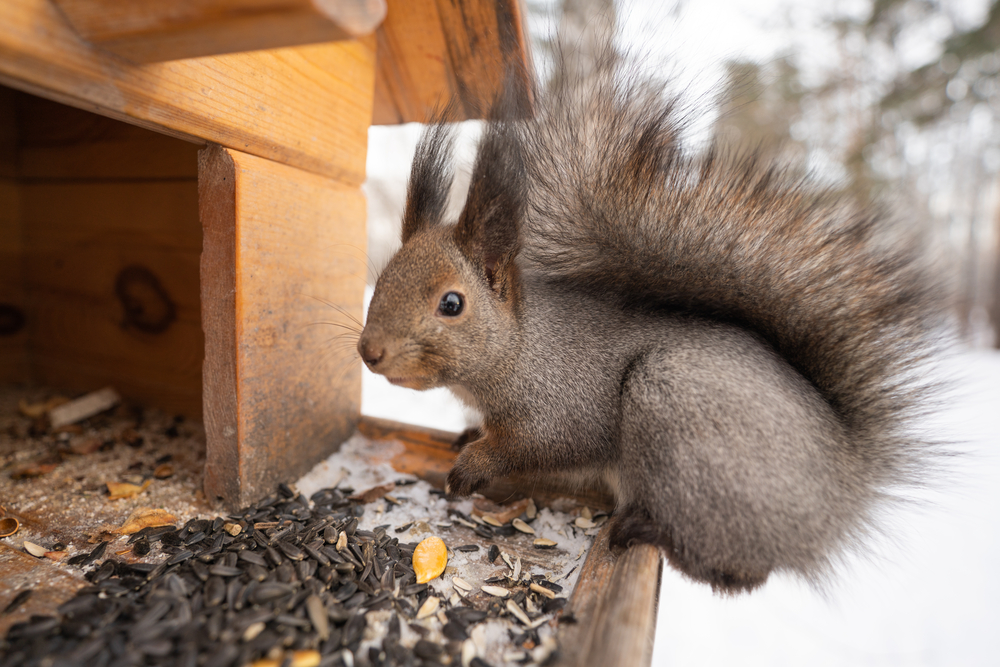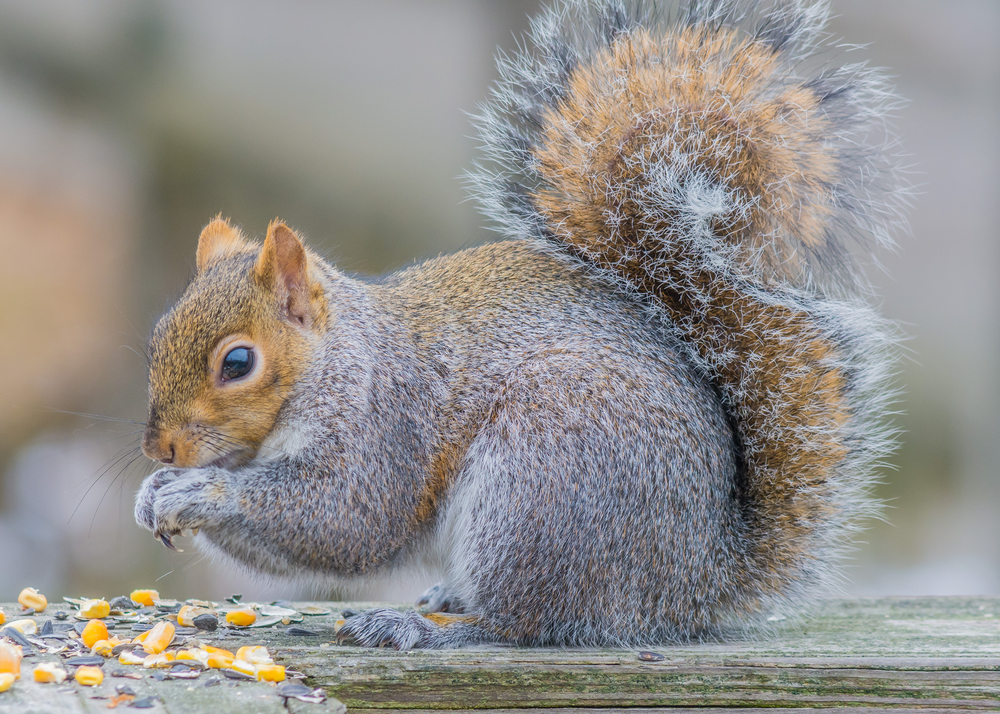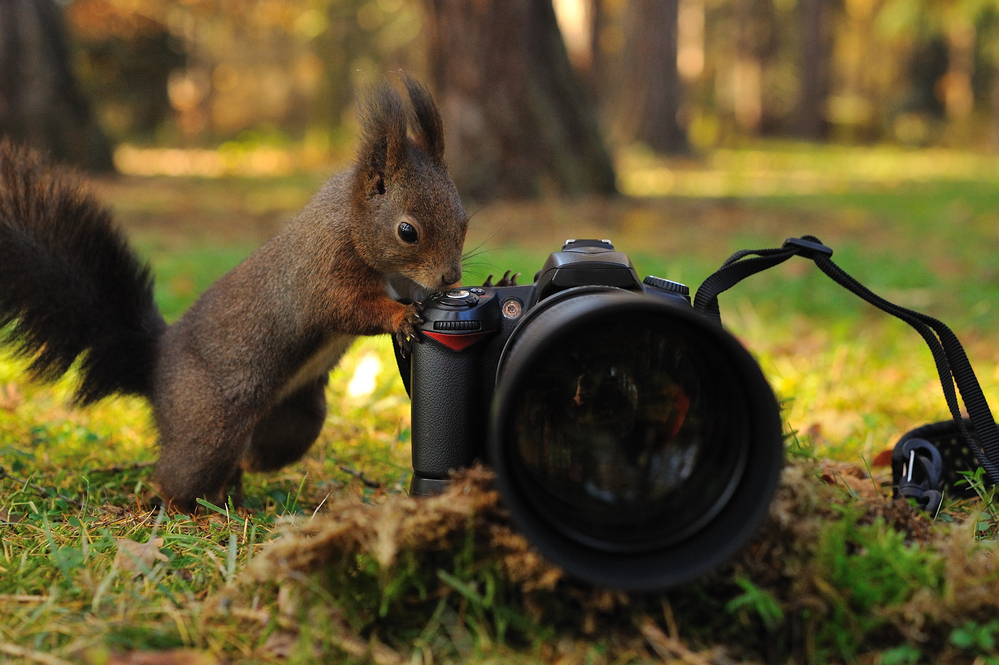Squirrels (Sciuridae) are some of the most popular animals in the world. From their fluffy tails to their playful antics, they bring joy and entertainment wherever they go. But there is so much more to these furry critters than meets the eye.
There are only two species of UK squirrels found on our shores, the red squirrel and the grey squirrel. Let’s take a closer look at their behaviour and characteristics, habitat preferences all the way through to breeding and reproduction. Get ready for an informative journey into understanding one of nature’s cutest creatures!
Squirrels Overview
Squirrels are a type of rodent belonging to the Sciuridae family, which includes chipmunks, marmots and prairie dogs. They are found in most parts of the world and can be divided into three main groups: tree squirrels, ground squirrels and flying squirrels.
Types Of Squirrels

Squirrels are fascinating creatures with many unique characteristics, from their wide variety of habitats to their impressive acrobatic abilities. Let’s take a look at the different types of squirrels around the world.
Tree squirrels
Tree squirrels are among the most common types of squirrel that inhabit forests across North America, Europe and Asia. They have long bushy tails with brown fur on top and white or grey fur underneath. Tree Squirrels typically live in trees but may also venture onto the ground for food or shelter during winter months when food is scarce.
Ground squirrels
These live mainly on land rather than in trees; they have shorter tails than tree-dwelling species, with greyish-brown fur above and pale yellow bellies below. These rodents tend to dig burrows underground, where they store food for later use as well as sleep during cold weather periods.
Flying squirrels
Flying squirrels differ from other types due to their gliding ability; these small rodents have large membranes between their front legs and hind legs, which enable them to glide up to 90 metres through the air. They usually nest high up in trees where they remain safe from predators while sleeping during daylight hours before emerging at night time for feeding activities, such as collecting nuts or fruits from nearby vegetation sources.
Squirrel Species In The UK
There are approximately 230 different types of squirrel species worldwide. In the UK, only two species of squirrel can be found: red squirrels (Sciurus vulgaris) and grey squirrels (Sciurus carolinensis). Let’s take a closer look:
Red squirrels

Red squirrels have a reddish-brown coat with white fur on their undersides and around their ears. They also have long tufts of fur on each ear which gives them an unmistakable appearance. Red Squirrels typically measure between 20 to 25 cm in length and weigh about 330 grams. They live mainly in woodlands but can also be seen in parks and gardens throughout Britain.
Grey squirrels

Grey squirrels are slightly larger than red squirrels measuring up to 35 cm long with a weight ranging from 350 to 600 grams. Grey squirrel coats vary from black or brownish-grey through to pale silver-grey colouring depending on the season, while they always retain a distinctive white underside and tail tip regardless of the time of year. Grey Squirrel populations are much more widespread than red squirrel populations due to their ability to adapt better to urban environments such as parks, gardens and other areas close by human habitation where food is readily available for them all year round.
Both types of squirrel feed mainly on nuts, seeds, berries, fungi and insects, although grey squirrel diets may include bird eggs when available too. Both species will often store food for later consumption either by burying it underground or hiding it away inside tree hollows or crevices high up in trees out of reach from predators like foxes or birds of prey who might otherwise steal their food stores.
Behaviour and Characteristics

Squirrels display a wide range of behaviours and characteristics that vary between species. From their complex communication systems to their ability to adapt to different environments, they are an incredibly fascinating group of animals.
In terms of behaviour, both red and grey squirrels can be seen scurrying around trees searching for food or playing chase games among themselves during the daytime hours when it’s light outside. At night they will find somewhere safe such as tree hollows or leafy branches, where they can rest until morning comes again. Grey Squirrels, however, may sometimes enter attics or garages if there’s an easy access point available, while red squirrel activity at night tends not to stray too far from trees unless disturbed by humans or other animals nearby.
UK Squirrel Habitats
Squirrels are found in a variety of habitats across the UK. They can be found in woodlands, forests, parks and gardens. They prefer to live near trees as they provide them with food and shelter from predators. Squirrels also make their homes in tree cavities or build nests out of leaves and twigs high up in the branches of trees.
In urban areas, squirrels have adapted to living among humans by taking advantage of man-made structures such as bird feeders, attics and garages for shelter. Grey squirrels are more common than red squirrels in urban areas due to their adaptability and ability to survive on human-provided food sources like nuts or seeds left out for birds.
Grey squirrels are usually seen during the day, while red squirrels tend to be more active at night when there is less activity around them which makes it easier for them to find food without being disturbed by people or other animals.
When looking for food, both grey and red squirrels will search through leaf litter on the ground looking for nuts, berries, fungi or insects that they can eat. During winter months when natural foods become scarce, they may even raid bird feeders if given access.
Both species also need water throughout the year, so look out for signs around bird baths or other drinking holes close by where you might spot a thirsty little critter.
Diet & Feeding Habits Of Squirrels In The UK

Squirrels are omnivorous animals, meaning they eat both plants and meat. They mainly feed on nuts, seeds, fruits, fungi and insects. In the wild, squirrels will also scavenge for food, such as eggs or small vertebrates like lizards or young birds.
In terms of their diet preferences, different species of squirrels have different tastes. Grey squirrels prefer to eat acorns, while red squirrels enjoy eating conifer cones and tree buds. Elsewhere in the world, flying squirrels love mushrooms, while ground-dwelling fox squirrels tend to go for walnuts and hickory nuts when available.
When it comes to feeding habits in the wild, most species of squirrels will bury their food in caches around their habitat so that they can access them later when food is scant during winter months or times of drought. This behaviour is known as ‘scatter hoarding’, which helps keep a steady supply of food throughout the year by storing up reserves before winter arrives. Squirrels may also store excess amounts of food inside hollow trees or other hidden places where predators cannot reach them easily if need be.
When it comes to gathering their daily meals from nature’s pantry, some species use scent-marking techniques such as urine trails to remember where they buried their stash. Others rely on visual cues such as landmarks near a cache site, like a particular rock formation nearby, so that they can find it again with ease.
Overall, whether it’s acorns and walnuts for grey and fox squirrels respectively; conifer cones and tree buds for red ones; mushrooms for flying ones – all these mammals share one thing in common: an insatiable appetite for delicious snacks found naturally in the environment.
Breeding & Reproduction
Squirrels reproduce throughout the year, with most breeding occurring between February and August.
Mating usually takes place on the ground or in trees, depending on the species. Females typically give birth twice a year after gestation periods of 35-45 days. Litter sizes vary from two to eight offspring, but three is typical for many species. The young are born blind and helpless; they rely entirely on their mother’s care for several weeks until they become independent enough to venture out into the world alone.
The lifespan of squirrels varies greatly by species; some live only 2-3 years, while others may survive up to 10 years or more in captivity or wild settings with optimal conditions such as plentiful food sources and low levels of predation risk. In general, however, most squirrels have an average life expectancy of 4-5 years due to predators like buzzards and owls, as well as disease risks associated with overcrowding in urban environments where food is abundant, but shelter is limited or nonexistent.
Additional Resources

Ash is a contributing author who has been writing about wildlife for as long as he can remember. He has a vast knowledge of many different types of animals, from the tiniest shrews to the great whales that live in the deepest oceans.
